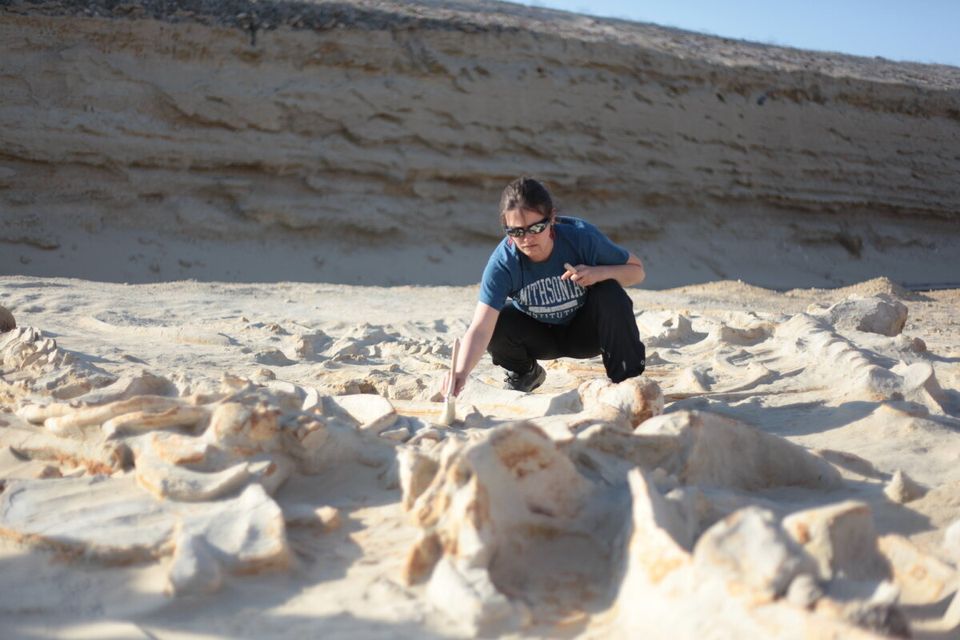The mystery of how a mass whale graveyard came to be in the Atacama Desert has finally been solved.
Discovered in 2010, the site contains the fossilised remains of at least 40 animals that died around five million years ago.
The culprit has been identified as poisoning by neurotoxins produced by blooms of algae which was either inhaled or ingested by the baleen whales.

The site of the dig
Their bodies were then washed into an estuary where they settled and over time became covered in sand and fossilised.
Nicholas Pyenson of the Smithsonian’s National Museum of Natural History, said: "The condition and arrangement of the bones, the presence of algal mats on some fossils, and the fact that there are multiple species of marine animals at the site, all point to killer algae as really the only plausible explanation.
"In today’s world harmful algae blooms happen all the time. This is the first time we can pin it down in the fossil record for marine mammals."
Story continues after slideshow...
The area where the bones has long been known as Cerro Ballena (whale hill), due to the visible fossils protruding from the ground.
But the full extent of the remains was only realised when excavations for the Pan-American Highway were carried out.
The researchers were only given two weeks to examine the site before work on the road had to resume.
To maximise their time the team took highly detailed 3D-scans of the site to preserve the information forever.

One of the 3D scans
Further, it was discovered it was not one mass stranding but a a series of smaller ones that occurred over a period of 10,000 to 16,000 years.
Nicholas Pyenson told the BBC: "We found extinct creatures such as walrus whales - dolphins that evolved a walrus-like face. And then there were these bizarre aquatic sloths.
"To me, it's amazing that in 240m of road-cut, we managed to sample all the superstars of the fossil marine-mammal world in South America in the Late Miocene. Just an incredibly dense accumulation of species."
